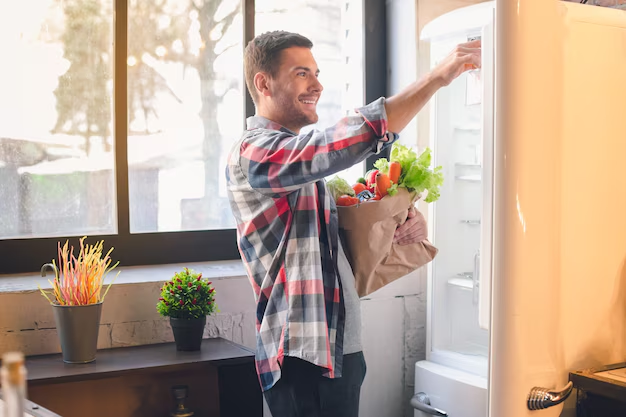Getting Started with Your LG Refrigerator: A Comprehensive Guide for First-Time Users
Purchasing a new refrigerator is an exciting experience, especially if it's a high-quality brand like LG. But alongside the excitement might come a sense of bewilderment. Where do you start? How do you ensure optimal performance from the get-go? This guide is designed to put your mind at ease, providing a step-by-step walkthrough on how to use your LG refrigerator for the first time. Whether you're an experienced homeowner or a first-time fridge owner, this comprehensive guide will help you navigate the initial setup process with confidence.
Unpacking and Installing Your LG Refrigerator
Preparing for Installation
Before you start unboxing your new appliance, it's essential to prepare your space for installation. Consider the following guidelines:
- Measure Your Space: Ensure the area designated for the refrigerator can accommodate its dimensions. Leave at least an inch of space on all sides for proper ventilation.
- Verify Electrical Requirements: Ensure the outlet can support your refrigerator's electrical needs. Most refrigerators require a standard 110/120-volt outlet.
- Check Flooring: The surface should be level to avoid vibration and noise. Uneven surfaces can affect the refrigerator's performance over time.
Unboxing the Refrigerator
Handle with care:
- Remove Packaging Carefully: Use scissors or a box cutter to remove any cardboard and styrofoam. Avoid scratching the surface.
- Inspect the Unit: Check for any visible damages caused during transit before signing any delivery confirmations.
Positioning Your Refrigerator
Once the fridge is unboxed and inspected:
- Move into Place: With the help of another person, carefully slide the refrigerator into position.
- Adjust the Feet: Use adjustable feet to level the fridge. A balanced fridge will function optimally and quietly.
- Wait Before Plugging In: Allow your fridge to sit upright for at least four hours, letting the refrigerant settle.
Initial Setup and Cooling
Powering Up
After your refrigerator has settled and is in place, it’s time to power up:
- Plug In the Appliance: Connect it to the designated socket. You should observe the interior lights turning on immediately.
- Set Initial Temperature: Use the control panel inside or outside the refrigerator to set the initial temperature. For most models, the ideal starting point is around 37°F (3°C) for the refrigerator and 0°F (-18°C) for the freezer.
First-Fill Check
Before you start loading your groceries, conduct a first-fill check:
- Allow Cooling: Give the fridge at least four hours to reach and stabilize at the set temperatures.
- Monitor Performance: During this time, keep an eye out for unusual sounds or temperature fluctuations.
Understanding the Control Panel
Control Panel Features:
- Temperature Controls: Adjust settings for both compartments to suit your needs.
- Child Lock Functionality: Prevent unintended adjustments with the child lock feature.
- Energy Saver Mode: Optimize electricity usage when the fridge is less busy.
Organizing and Loading Your Refrigerator
Smart Organization Tips
An effectively organized fridge not only prevents spoilage but also ensures efficient performance:
- Airflow Matters: Avoid blocking the vents to allow proper airflow and cooling.
- Use Organizers: Utilize bins, shelves, and drawers for an organized stockpile.
- Regular Cleaning: Adopt a regular cleaning schedule to keep your refrigerator odor-free and hygienic.
Loading Properly
When filling your fridge for the first time:
- Do Not Overload: Leave space for air circulation. Overloading can lead to inefficient cooling.
- Separate Foods: Place dairy, meats, and greens according to their temperature requirements.
Recommended Storage Practices
- Store beverages and condiments in the door compartments.
- Place raw meats in the lower section to prevent cross-contamination.
Maintenance and Troubleshooting
Regular Maintenance Tips
Keeping your LG refrigerator in top shape will prolong its life and ensure efficiency:
- Cleaning Coils: Vacuuming the condenser coils twice a year enhances energy efficiency.
- Replacing Filters: Change water and air filters every six months for the best performance.
- Check Seals and Gaskets: Ensure doors are sealing properly to prevent energy loss.
Troubleshooting Common Issues
Be ready to address minor hiccups:
- Noisy Operation: Usually due to the fridge not being level. Adjust the feet accordingly.
- Moisture Build-up: Check door gaskets and ensure seals are intact.
- Temperature Fluctuations: Confirm external vents are not blocked and the fridge is spaced correctly.
Enhancing Your LG Refrigerator Experience
Features Worth Exploring
To make the most of your LG refrigerator, understand and use its advanced features:
- Smart Diagnosis: Utilize this feature through a smartphone for quick problem-solving tips.
- Door-in-Door Storage: Allows for easy access to frequently used items, saving energy.
Tips for Energy Efficiency
Running your fridge efficiently not only saves money but conserves energy:
- Keep Doors Closed: Limit opening time to maintain internal temperatures.
- Stock Smartly: A well-stocked fridge retains temperatures better than an empty one.
Sustainability Considerations
- Eco-Friendly Refrigeration: Choose energy-efficient models and settings to reduce environmental impact.
- Recycling Old Appliances: Consider recycling options instead of simply discarding old models.
Key Takeaways 📝
Here's a quick rundown of essential steps and tips for setting up and maintaining your LG refrigerator:
- 📏 Measure your space before installation.
- 🔌 Allow upright settling for four hours post-positioning.
- 🌡️ Set the initial temperatures to 37°F for refrigeration and 0°F for freezing.
- 🚫 Avoid blocking vents to ensure proper airflow.
- 🔒 Engage child lock to secure settings.
- ⚒️ Perform regular maintenance, like cleaning coils and changing filters.
- 📱 Use smart features, like the diagnostic app to enhance your experience.
- 🌍 Consider sustainability through eco-friendly practices.
Congratulations on your new LG refrigerator! By following these guidelines and understanding the functionalities of your appliance, you can ensure it operates efficiently and effectively from day one. Enjoy the blend of sophisticated technology and usability your LG refrigerator brings to your home!
